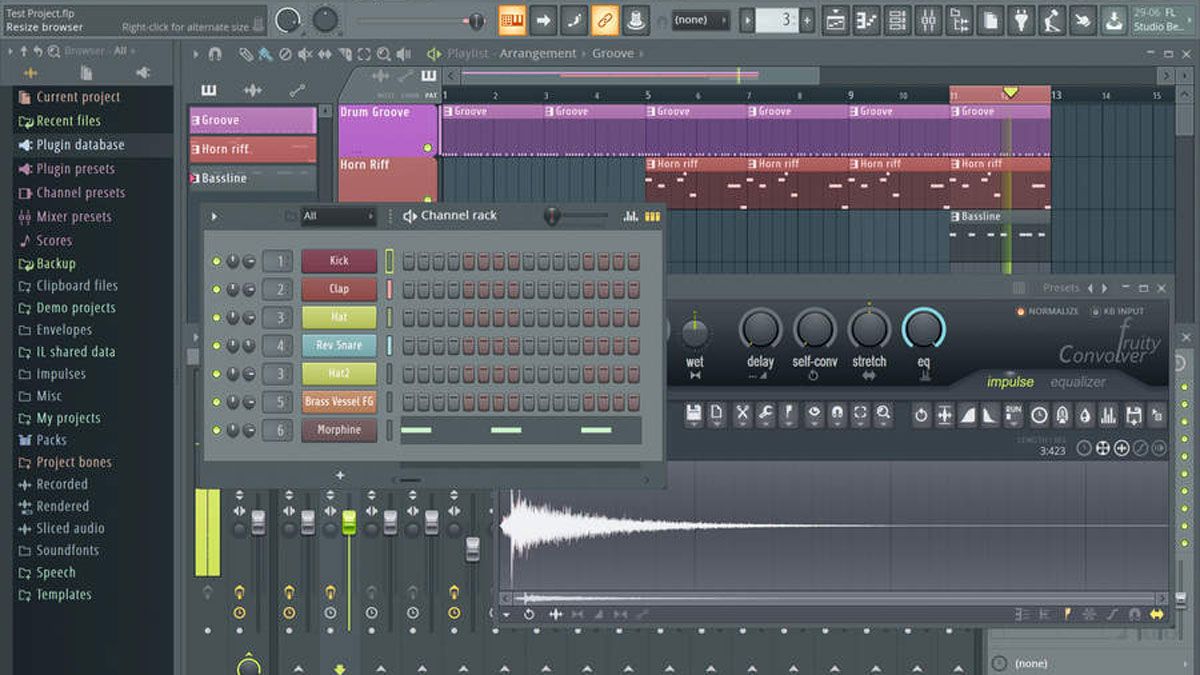

It is not as intuitive as more popular virtual instruments like Native Instrument’s Massive, but there is no question that it’s capabilities far exceed those of Massive and other similar synths. Image Line’s Harmor plug-in is a powerful, but complex virtual instrument that I am still attempting to figure out.
#Harmor vst sale full#
To maintain the original pitch, the “Pro Default” and “Pro Transient” options work best.Īlso, one other consideration to make when using full length tracks in Performance mode for DJing is to separate the track into multiple parts as potential cue points. This is the least resource intensive when manipulating the audio file, but if you raise or lower the tempo too much (usually within +-10 bpm of the original tempo) it starts to sound funny in my opinion. The default is “Resample”, which works like a turntable and raises or lowers the pitch consistent with the raising or lowering of the tempo. Once you have synced the audio file you may want to adjust the “Time Stretching” to the audio output you prefer.

There are other methods for syncing up audio using Newtone in a way similar to Ableton Live’s warp feature, but the method in the video works fine for most electronic music. You may also be interested in the DJ Performance Mode Templates that are set up for the APC40 and Launchpad. This is useful for syncing up tracks for DJing in performance mode. You can also change the length of the envelopes to create longer sweeps. Keep on fiddling with other parameters to change the sound of the sweep.

This example shows a 2 bar sine wave that oscillates at the same speed until it gets to the final 1/4 bar: Fourth, select “Phaser Mix” in the envelope drop down, select the “Tempo” option, and create an envelope that adjusts the amount of the “Phaser Mix” that matches the length of your sweep. Third, turn the “Phaser Mix” all the way to the right. Second, turn waveform mix to the right (the Square Wave). Now to add a little more complexity to the sweep, lets adjust a couple of parameters. This example show a pretty straightforward pitch rise: A riser will increase the pitch as it progresses, but you can do whatever you like here to create a custom pitch sequence for your sweep. Select “Pitch” from the envelope drop down menu and create a pitch envelope. If you play a note you will notice the sound emerges from nothing and continually increases in volume – not exactly a killer sweep at this point, but with some additional envelopes it will get better. We will first modify this volume envelope by clicking on the “Tempo” option and altering the envelope so that the last three nodes are all on the same point and move them to create a ramp (this example shows a 2-bar ramp): Here we see Harmor’s default Volume Envelope: In this tutorial, we will use Image Line’s Harmor synth to create a sweep/riser.
#Harmor vst sale how to#
However, creating sweeps in a VST instrument can provide much more flexibility and control over the sound and understanding how to make them will allow you to create some really nice transitions. This is just fine and still proves to be a good way of creating sweeps, especially with a lot of the pitch preservation tools allowed with stretch functionality in current DAWs. One of the old school methods of making sweeps was to take a stab or single note hit and reverse the playback of the waveform. These sounds are commonly referred to as sweeps, and when it involves pitch or frequency increasing it is called a riser. Creating tension in transitions and breakdowns usually involves a sound that increases in volume and intensity as it nears the next phrase (usually an 8 or 4 bar segment where the music changes).


 0 kommentar(er)
0 kommentar(er)
